A home management binder is a powerful tool that helps you keep your household organized. It allows you to manage your home life, finances, and family activities in one simple place. With everything at your fingertips, you can reduce stress and prevent feeling overwhelmed by daily tasks.
Some of the information below includes affiliate links. When you click these links I may make a commission from your purchase. As an Amazon Associate, I earn from qualifying purchases.
Starting a home management binder doesn’t have to be complicated. You can customize it to fit your needs, whether that means budgeting, meal planning, or tracking family schedules. This binder evolves with you and your family’s changing needs. We’ve used the home management organization sheets from our Payhip store below!
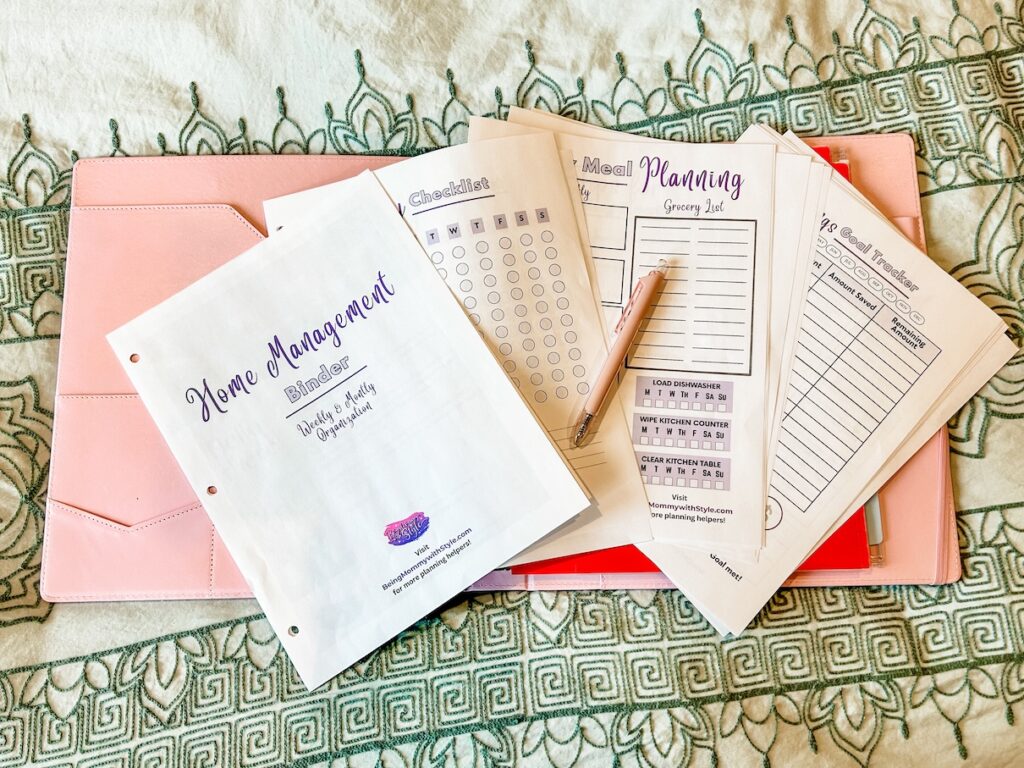
Using a home management binder can transform the way you handle daily responsibilities. It provides a clear structure that can lead to more free time and less chaos in your life. Keep track of important information like your weekly appointments, grocery list, and to-do list for around the house, all in one place!
Check out my favorite tips below on how to make this binder as functional as possible!
Home Management Binder Highlights
- A home management binder keeps all your important information organized.
- It helps reduce stress by making it easier to manage daily tasks.
- Customizing your binder allows it to grow with your household needs.
Getting Started With a Home Management Binder
Creating a home management binder can help keep your household organized. You will need to choose a functional binder and gather essential supplies to get started. Setting it up effectively will ensure you use it regularly.
Choosing the Right Binder
Selecting the right binder is key to your organization. Consider a 3-ring binder that is sturdy enough for daily use. A size of 1.5 to 2 inches is usually adequate, but larger binders can hold more sections if needed.
Look for a binder with a clear cover where you can insert a personalized cover page to create a more personalized look. This makes it easy to identify your binder among other materials. You can also choose binders with pockets to store loose papers.
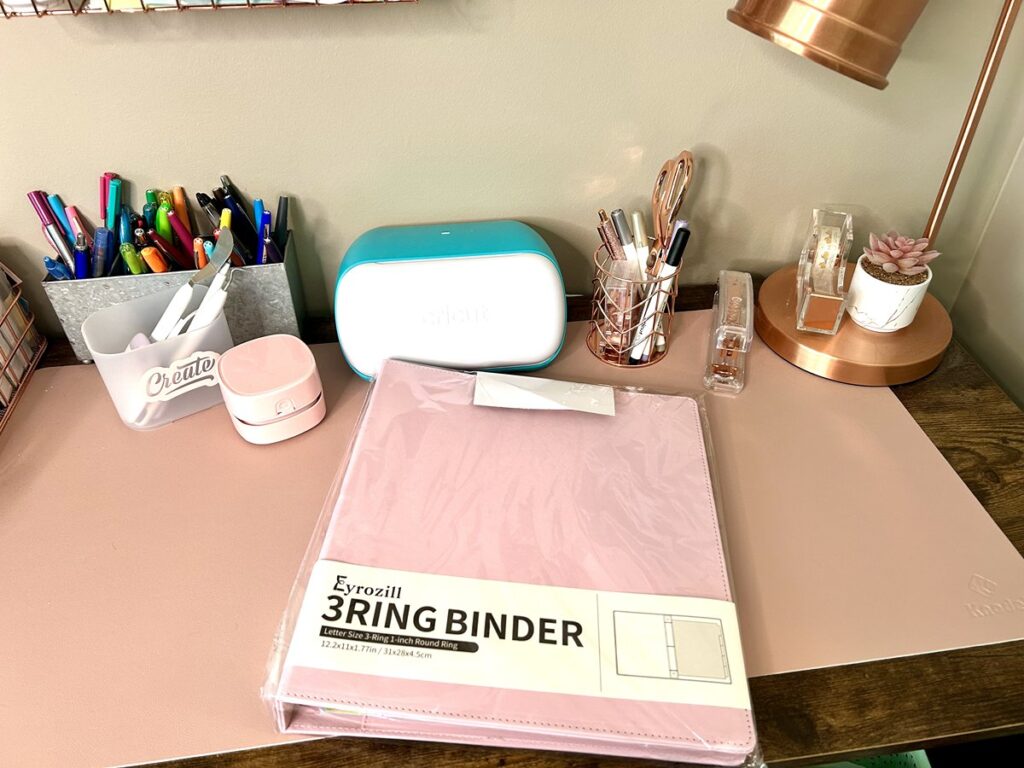
Found in photo: 3-ring Binder
I personally really love this binder from Amazon that has a clip on the front and is made of a beautiful pink leather. Inside it already had dividers and a handy clear zip folder. It looks great as a decor piece and is functional with the clip on the front to keep track of important papers for the day!
Essential Supplies
Gather essential supplies to make your binder functional. Start with dividers to create sections for different topics. You can label these sections for easy access. I also love the clear slider pocket that comes with this recommended binder!
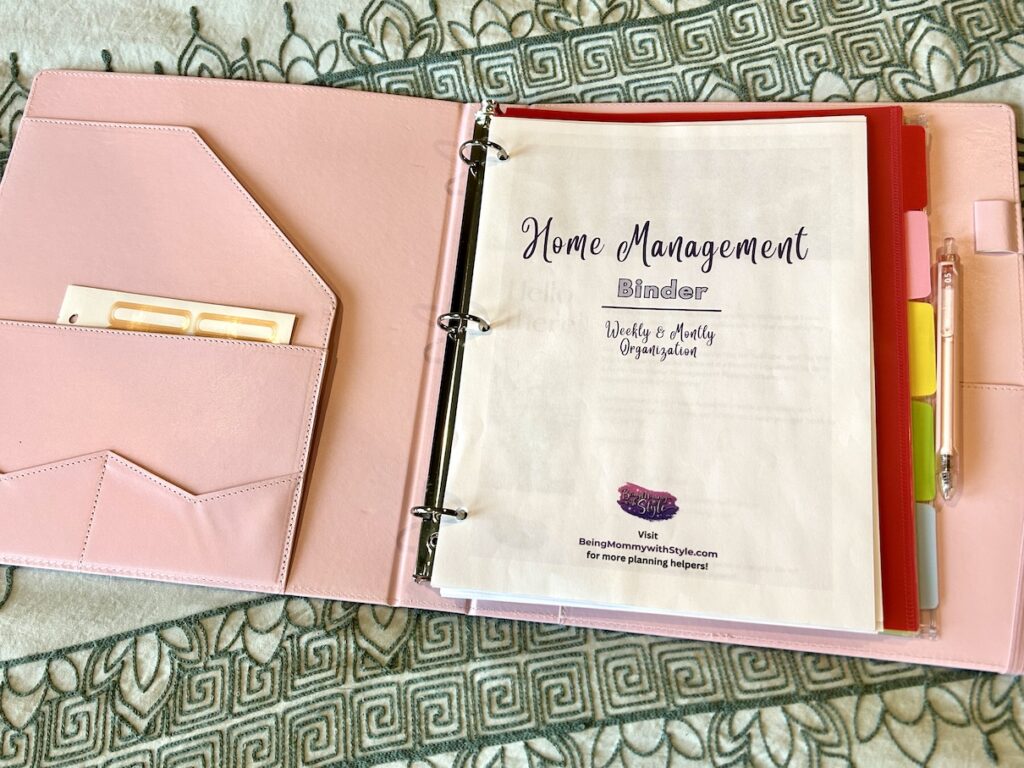
Found in photo: 3-ring Binder / Management Inserts
Use sheet protectors for important documents to keep them safe. Printable templates are also useful. This includes calendars, to-do lists, and meal planners.
I also love these smooth writing pens from Four Candies, that come in a variety of styles!
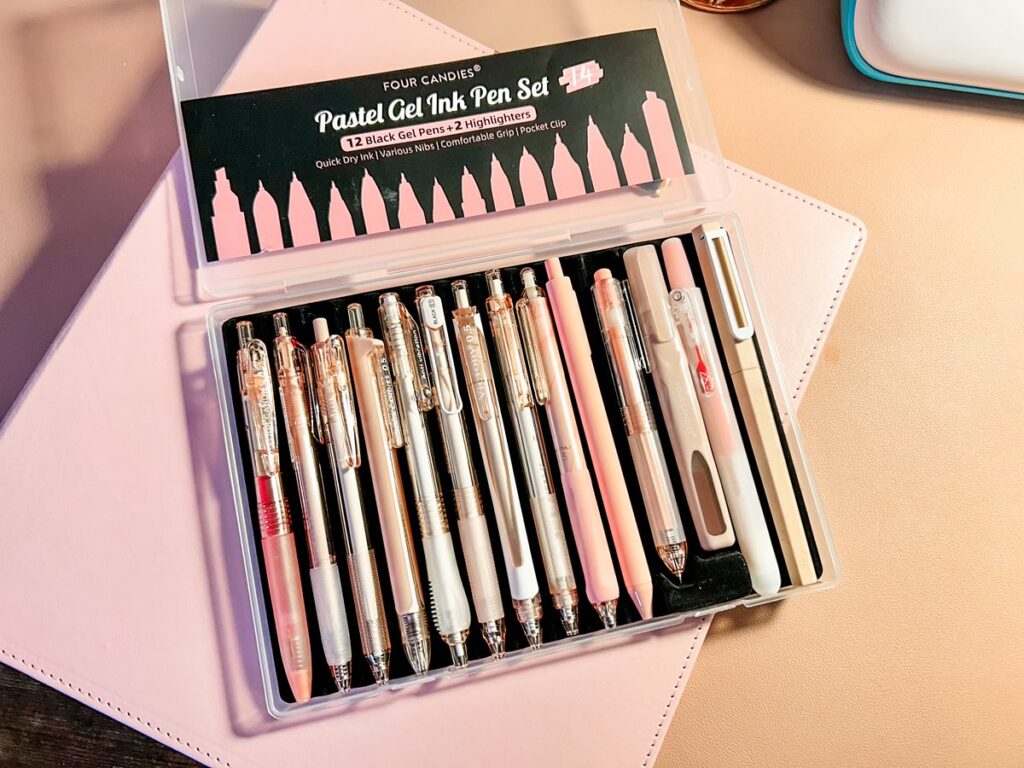
Found in photo: Pen Set
Make sure you have plenty of printer paper for printing any additional pages or forms. A good printer will help you create the printables you need right at home.
Setting Up Your Household Binder
Begin setting up your binder by organizing sections that suit your needs. Common sections include finances, schedules, and home maintenance. You can also add a section for contacts like emergency numbers or service providers.
Once you have your sections, create a table of contents at the front of your binder. It will help you find information quickly. We have all of these different sections in our Home Management printable in our Payhip store.
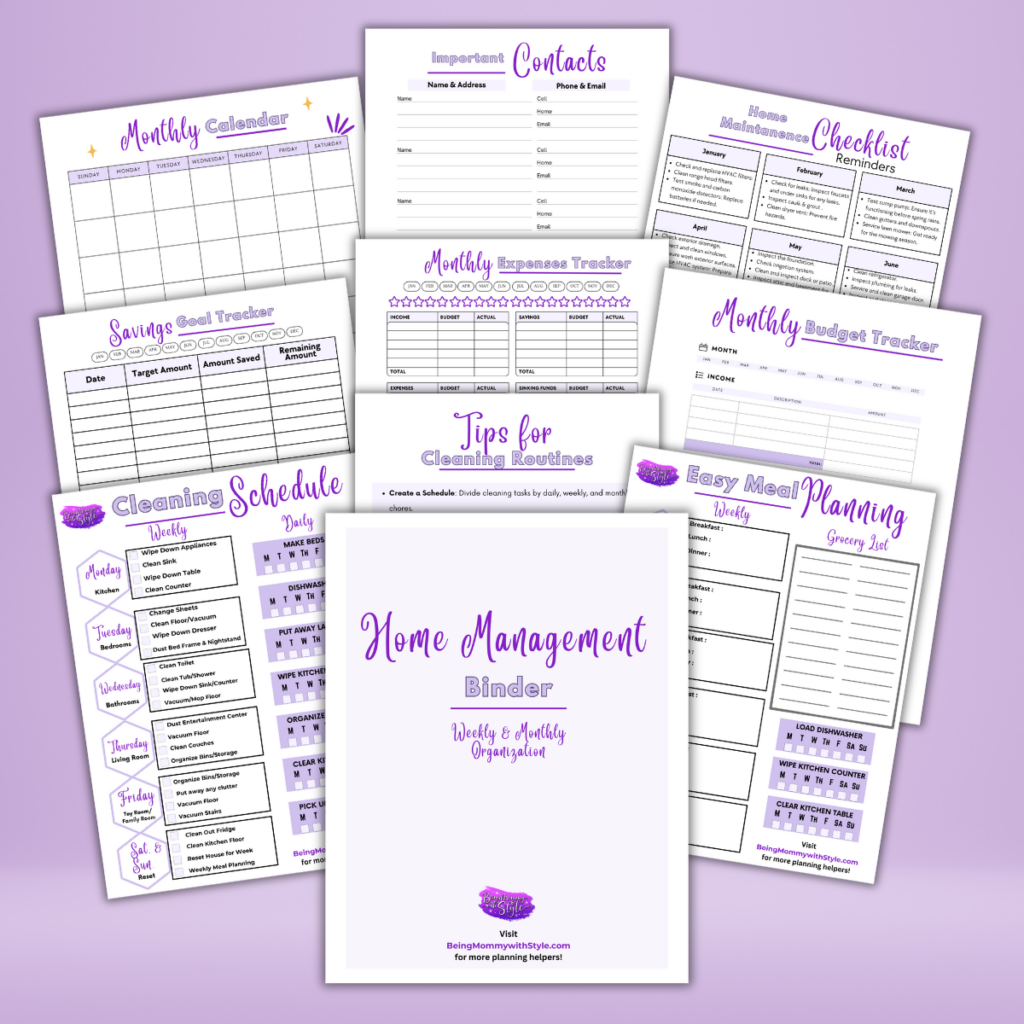
Grab our household management inserts from our Payhip store, for one low price!
Be consistent with your layout. Use tabs to mark each section clearly. Keep updating the contents regularly so your binder remains useful and relevant. Use the monthly calendar inside to keep track of special appointments and monthly recurring appointments.
Financial Management
Managing your finances is crucial for keeping your household running smoothly. This includes budgeting, tracking expenses, and handling insurance and utilities effectively. The home management binder also gives you a place to keep track of any invoices or monthly bills that arrive in paper form so you can easily refer to them
Budgeting and Bills
Creating a budget helps you see where your money goes each month. Start by listing all your sources of income. Then, note all your monthly expenses, like rent or mortgage, groceries, and transportation. We have some helpful budgeting pages included in our Home Management Binder bundle.
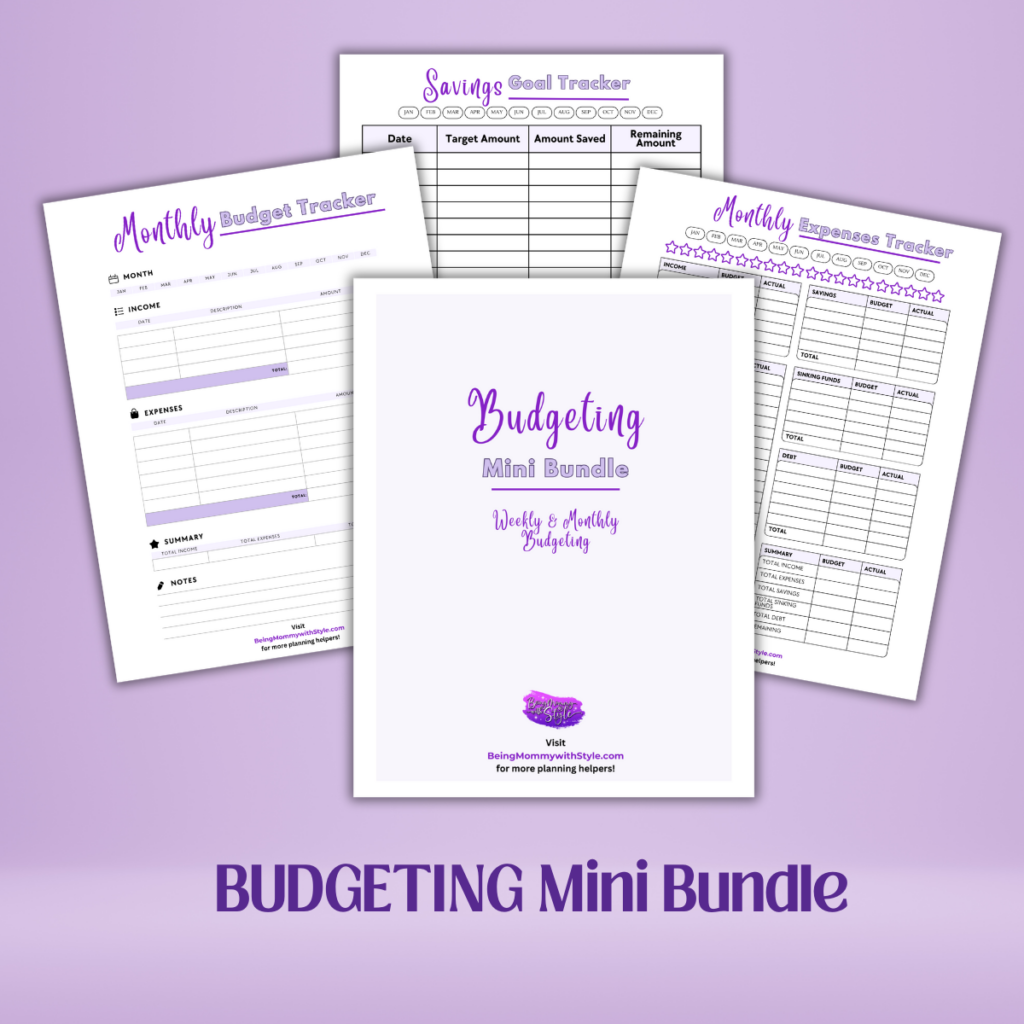
You can also get the budgeting mini bundle separately in our Payhip store!
Once you know these amounts, you can adjust spending to ensure you know exactly where you stand each month. Regularly review your budget to make sure you stay on track.
Savings and Expenses Tracker
Tracking your savings and expenses helps you build a financial cushion. Start by setting a savings goal, like $1,000 for emergencies. Use a savings tracker to monitor your progress. There’s a Savings Goal Tracker to keep track of your progress.
On the Savings Goal Tracker, you can watch your progress towards specific goals and keep track of how much more you have left to save. Print the sheet out multiple times, if you are saving for multiple things like a down payment on a house or car, or even a vacation savings budget!
Home and Family Organization
A well-organized home and family structure makes daily life easier. You can manage meals, cleaning, important contacts, and school information effectively with a home management binder. This system keeps everything in one place and helps you stay on track.
I like using a daily schedule and to-do list to keep me on track for the day. I’ll note important work projects I need to complete that day, important appointments for a family member, or other to-do items for the day, like run to Target to complete the grocery shopping for the week.
Meal Planning and Groceries
Meal planning can help by saving time and reducing stress. Start by creating a weekly meal plan where you create a list of all of your weekly meals and the ingredients you’ll need to shop for those meals. List meals for each day, considering your family’s preferences and dietary needs.
You can use a simple template like the free printable sheet below.
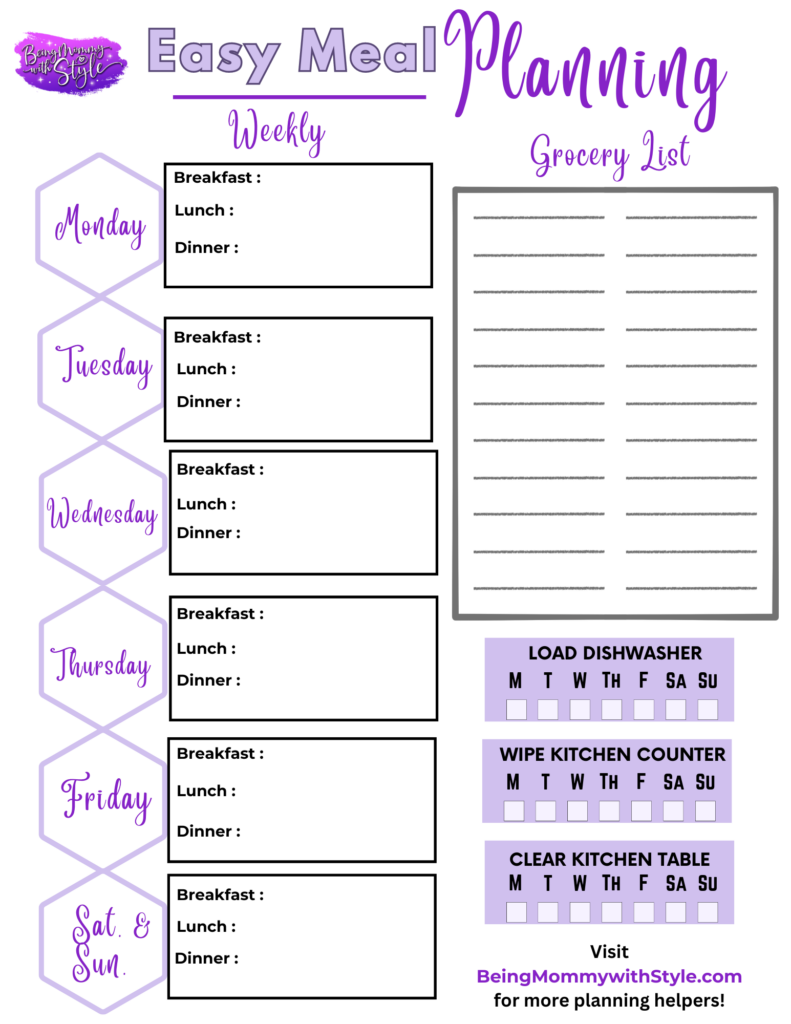
Next, make a shopping list based on the meals you’ve planned. Grouping items by category is a great idea to make your grocery shopping more efficient. This will also help you avoid impulse buys and stay within your budget.
Download the free meal planning sheets to plan out your weekly meal plan and check out our favorite tips for weekly meal plans.
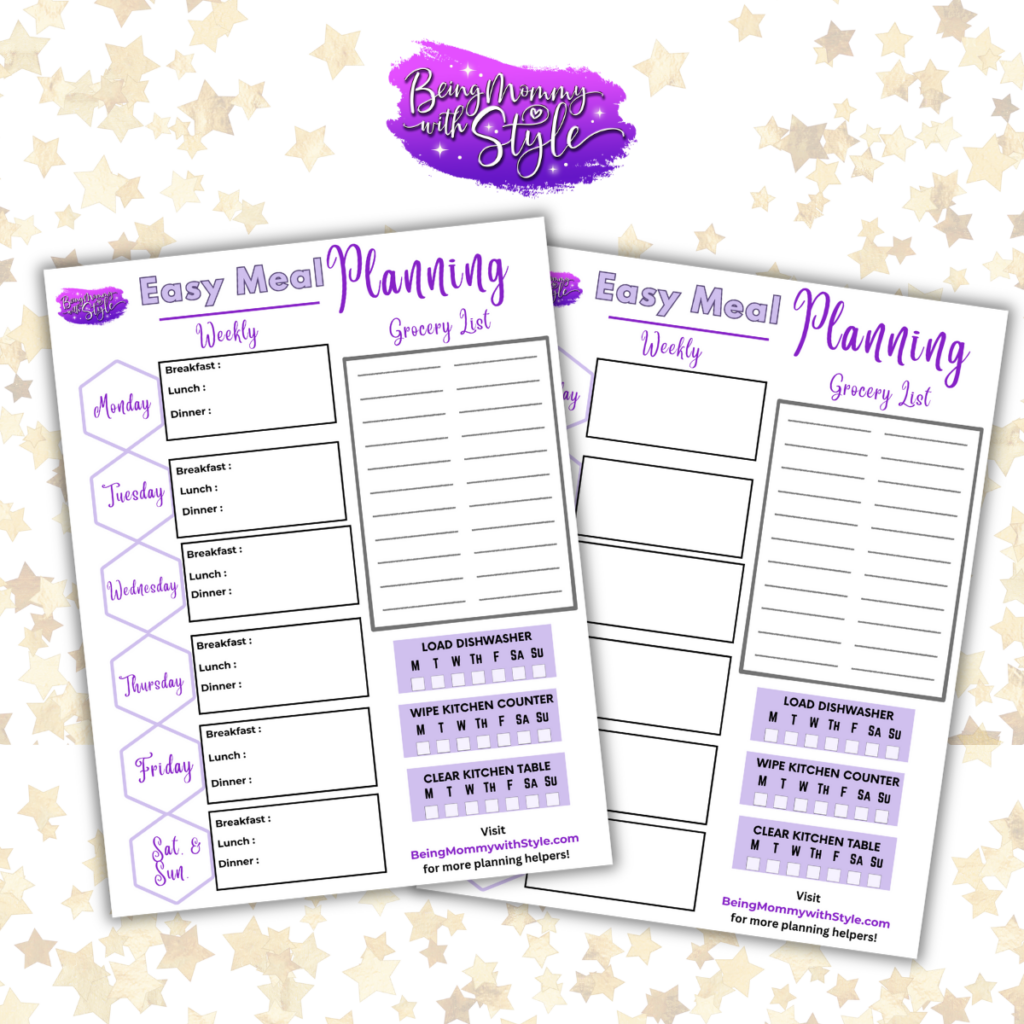
Cleaning and Maintenance Schedules
Keeping your home clean requires a regular schedule. Create a daily, weekly, and monthly cleaning checklist. A sample checklist might look like this:
- Daily: Make beds, wash dishes, wipe down counters.
- Weekly: Vacuum floors, dust surfaces, clean bathrooms.
- Monthly: Clean windows, deep clean appliances, organize closets.
Download the free cleaning schedule sheets at the link below. Use the cleaning schedule printable to divide chores throughout the week. This keeps your home organized and comfortable.
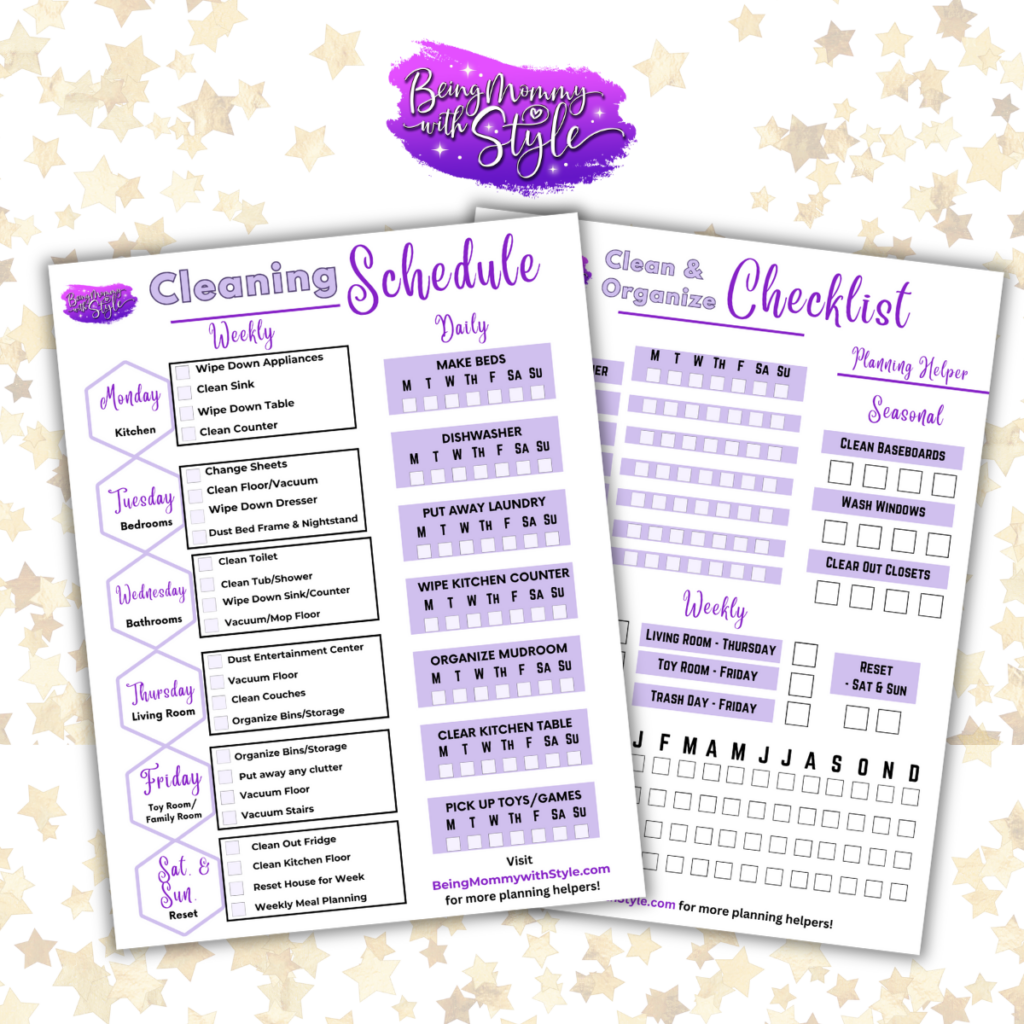
You’ll find that efficient planning in these areas will lead to a more balanced and enjoyable life.
Include home maintenance tasks, like checking smoke detectors or changing air filters, in your monthly schedule. This ensures your home stays safe and functional.
Family Contacts and Medical Info
Keep a section in your binder for important family contacts. Include names, phone numbers, and addresses for doctors, dentists, and emergency contacts.
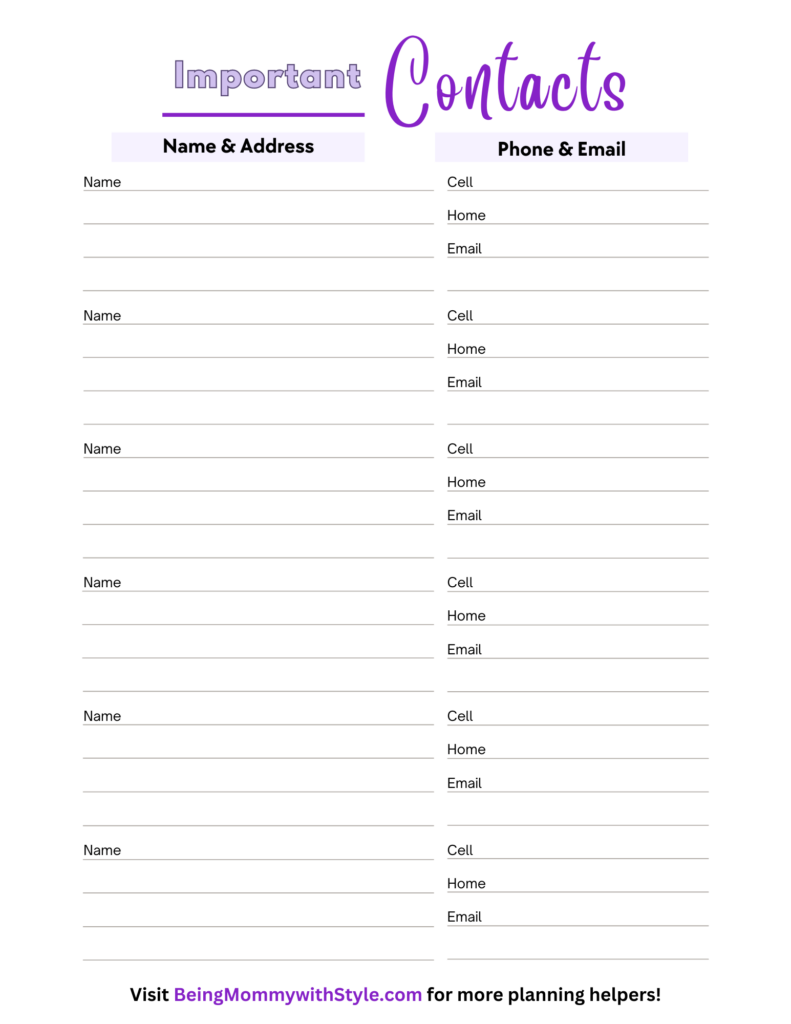
Don’t forget to add your family’s medical information, including allergies and medications. A medication tracker is helpful for keeping track of dosages and refill dates. This section is vital in emergencies to provide quick access to essential information.
Kids and School Information
Organizing school information ensures you stay informed about your children’s education. Keep a section for each child with their school schedules, teacher contacts, and important dates.
Include homework schedules and report card information to track their progress. A calendar can help you manage school events, like holidays and meetings, keeping you on top of everything. With this system, you can support your kids effectively.
Goals and Personal Development
Setting clear goals is vital for your personal growth. Start by writing down your short-term and long-term goals in your binder.
You can use a habit tracker to monitor your progress. Break your goals into smaller steps to make them less overwhelming. For example:
- Personal Goals: Develop a new skill or hobby.
- Family Goals: Schedule regular family activities.
- Home Improvement Goals: Organize one room each month.
Review these goals regularly to stay on track. Creating a bucket list with fun experiences can keep you motivated and excited about life.
Travel and Special Occasions
Planning for travel and special events requires organization. Keep a travel section in your binder that includes:
- Itineraries: List your travel plans and destination details.
- Packing Lists: Write down essentials to ensure you don’t forget anything.
- Budget Sheets: Outline your travel costs to avoid overspending.
For special occasions like birthdays or holidays, make space for important dates. Include checklists for party planning, gift ideas, and guest lists. This helps reduce stress and ensures you enjoy those special moments.

Pet Care and Homemaking
Pets are an important part of home life. Keep records of their veterinary appointments, vaccinations, and feeding schedules in your binder. Create a pet care checklist that includes:
- Daily feeding
- Exercise routines
- Grooming needs
Administrative Essentials
Keeping your home organized requires careful management of essential documents and information. This includes maintaining important documents, managing passwords securely, and logging updates and maintenance tasks. Here’s how to approach these key areas.
Important Documents and Information
It’s vital to collect and organize all important documents for your home. Keep important documents in a fireproof safe and maintain a list of where to find important documents. Start with a checklist of key items such as:
- Birth certificates
- Insurance policies
- Home deeds and mortgage information
- Vehicle titles and registration
- Tax returns
Make a table of where each document is stored, so you can find them easily when needed. Your home management system should include a list of all utility contacts, service providers, and emergency numbers, ensuring you have quick access in case of urgent issues.
Managing Updates and Maintenance Logs
Staying on top of home maintenance is crucial for preserving your property. Start by keeping a log of all maintenance tasks, such as:
- Routine cleaning tasks (e.g., gutter cleaning, HVAC servicing)
- Vehicle maintenance (e.g., oil changes, tire rotations)
- Home repairs (e.g., plumbing fixes, roof inspections)
Use a simple table format to track dates completed, costs, and service providers.

This way, you can easily plan for future maintenance. Regularly review your logs to schedule upcoming tasks.
Organization at Home
These tips help our daily family life run smoother and are a great way to stay organized with household tasks. Use the free printables in this article for a weekly meal planner and monthly cleaning schedule to get a home routine in place!
Or check out our home management binder printable pages to keep everything in one central location!
These home organization printables are a great first step to creating routines around your house that are easy to implement and stick to throughout the year! Visit our Payhip store for these printables and more!

** All opinions are my own. This post contains affiliate links. Being Mommy with Style is a participant in the Amazon Services LLC Associates Program, an affiliate advertising program designed to provide a means for sites to earn advertising fees by advertising and linking to amazon.com. As an Amazon Associate, I earn from qualifying purchases.

